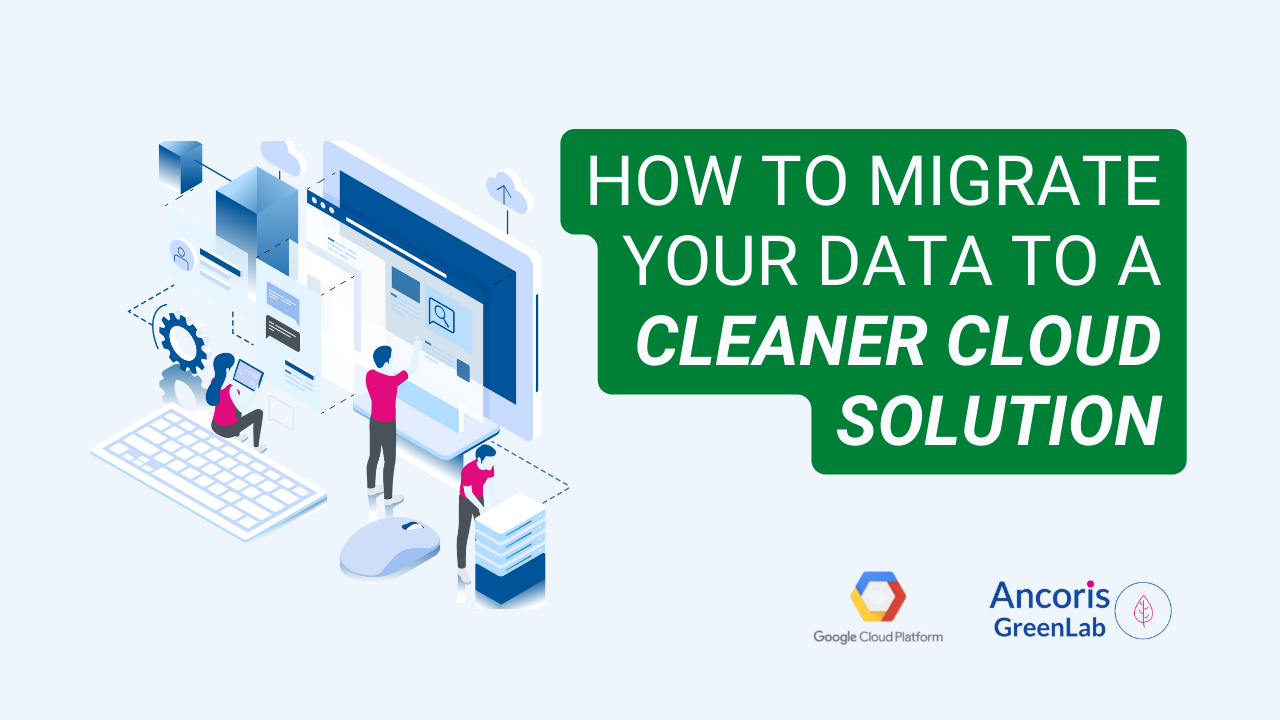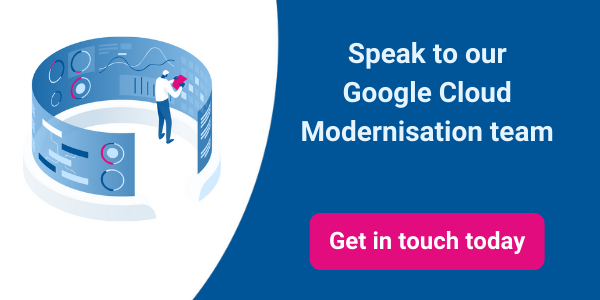So, you know you need a cloud solution to support your business’s digital transformation, and you’re looking to move to a more environmentally friendly provider. But you’re not quite sure how to actually execute a seamless transition.
You’re not alone — it’s something that countless businesses struggle to fully understand.
In this guide, we’ll walk you through the steps required to migrate your data to the cleanest cloud provider, Google Cloud Platform.
By the end, you should have a much better idea of what to expect and what you can do to improve your internal processes and start improving your company’s carbon footprint.
A step-by-step guide to your clean cloud migration
When it comes to the point where you’re ready to migrate your data, there are several steps you should follow in order to ensure it’s a stress-free and seamless experience.
Step 1. Choose your cloud solution
The natural first step in the migration process is to identify which platform you will be migrating to. Our recommendation is the Google Cloud Platform (GCP) due to its credentials as the cleanest cloud provider.
Step 2. Define your environments
Next, you’ll need to define your starting and target environments. The target environment is straightforward; it’s the Google Cloud instance you’re going to be migrating your data to.
The starting environment refers to the place(s) where your data is currently stored, and may include an on-premises environment, a private hosting environment, or another public cloud environment.
Step 3. Assess
At this point, it’s time to assess and gather information about your current environments. This phase of the migration should include:
- Taking inventory of the apps in your current environment and the machines using them
- Cataloguing the apps based on their complexity in migrating them to your target environment
- Educating internal teams on the Google Cloud Platform
- Defining experiments and proofs of concept, which will help you to understand how the Google Cloud Platform will perform relevant use cases upon migration
- Deciding which workloads to migrate first
Step 4. Plan
The next stage is about ensuring everything is set up in the target environment ready for the migration to take place. Here’s what you need to in the planning stage:
- Establish user and service identities (i.e. the users and groups that will need access to the various areas of the target environment)
- Design your resource organisation, which defines the hierarchy of the target environment such as folders and projects
- Define groups and roles for resource access to ensure users have the correct access levels to the areas they need
- Set up the network topology and establish connectivity to the new cloud environment using a virtual private cloud (VPC) network
Step 5. Deploy
Once the foundations of your target environment are built within the GCP, it’s time to begin deployment of your workloads into the new environment. This can be done manually, or you can look to use a deployment automation process such as a continuous integration and continuous delivery (CI/CD) pipeline.
Step 6. Optimise
Once your workloads are deployed to the Google Cloud Platform, you can start to enjoy the benefits of a cleaner cloud environment. However, it’s also important to continually optimise your solution to ensure you get every available value from it.
Optimisation initiatives you can consider include:
- Training your teams on how to use the solution effectively
- Monitoring the workloads to ensure they’re running smoothly and as expected
- Setting up automations where relevant to reduce error risk and save time and resource
Need further support with your migration to the Google Cloud Platform?
As this article has highlighted, there’s a lot of preparation, planning and resource that goes into a cloud migration. As many companies and organisations look to the cloud as part of their digital transformation goals, there’s also a high priority on carbon reduction, which makes the Google Cloud Platform the number one choice.
However, it can be difficult to understand all the benefits and processes that go into a successful cloud migration. That’s where Ancoris can help. As a Google Cloud Premier Partner with over a decade of experience working with Google, our team of specialists can help you leverage Google Cloud to transform into a more environmentally-aware, flexible, and scalable organisation.
Our GreenLab solution can help you to realise the vast opportunities of moving your data and workloads to a cleaner platform. Get in touch with us today to understand:
- The transformation and modernisation opportunities that can be achieved with Ancoris and Google Cloud Platform
- What the financial, technical and, as importantly, energy efficiency plan for migration to Google Cloud Platform, the cleanest cloud, looks like
- How a cloud migration can not only make your company more efficient, but also make a big dent in the carbon footprint of your technology stack
And if you need further detail on how a clean cloud solution can supercharge your business, download our free whitepaper — How Ancoris GreenLab can help your business achieve its net zero goals through cloud computing.

